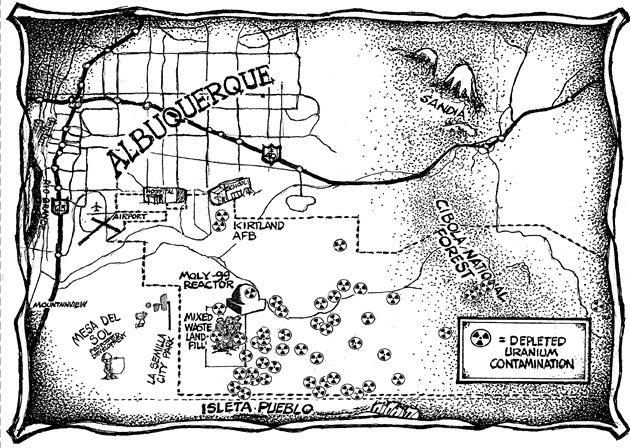
Tri-Valley Communities Against a Radioactive Environment (CAREs)
Tri-Valley Communities Against a Radioactive Environment (CAREs) is one of 39 environmental and peace organizations that won a landmark lawsuit against the U.S Department of Energy for failure to follow-through on adequate environmental cleanup during its 50+ years of nuclear weapons research, testing, and production. Part of this settlement was the establishment of the MTA Fund (Citizens’ Monitoring and Technical Assessment Fund), which provided $6.25 million for tribes and non-profit organizations to assess and conduct independent technical and scientific studies regarding the multitude of technical, ecological, and health issues surrounding the nation’s nuclear weapons complex.
Clark University was chosen by the non-profit peace and environmental groups as the conservator of these reports to ensure they remain available to the public in perpetuity. The unconventional election of university as conservator is an innovative example, particularly within the era of Web 1.0, of higher education as protector and provider of information through wide dissemination.
The research and reports available in this series were conducted by the Tri-Valley Communities Against a Radioactive Environment (CAREs) with their allocated portion of the MTA fund.
If you have any questions or concerns please contact us at digitalrepository@clarku.edu.
-

A Soil Contamination Survey of Timbisha Shoshone Tribal Lands within Close Proximity to the Nevada Test Site
Bonnie Eberhardt Bobb and Tuppipuh Project
The Tupippuh Project consists of members and descendants of the Western Shoshone Nation’s Timbisha Shoshone People whose traditional homeland includes the area that is now the vicinity of Death Valley National Park, CA and north including Beatty, NV and Lida, NV. The mission of the Tupippuh Project is to preserve and strengthen traditional Western Shoshone cultural values for future generations.
The objectives of this study were: 1) to perform soils analyses of the parcels to determine if radioactive contamination is present; 2) to conduct interviews with elders who may have relevant knowledge of contaminant pathways in the soil, air, plants, and wildlife during the nuclear era; 3) to gather, review and analyze available scientific reports, evaluations, special studies and projected contamination patterns and models of NTS contamination; 4) to collaborate with the Yomba Shoshone Tribe of Nevada’s monitoring initiative, by sharing information and equipment; 5) to develop a final report for the project, which will include the results of the archival research, elder interview summaries (with confidentiality restrictions), soil contamination survey results and analyses; and 6) to disseminate the results of this report to tribal members, tribal governments and organizations, and public and private organizations with a vested interest in this region or this subject matter.
This research was completed money allocated during Round 3 of the Citizens’ Monitoring and Technical Assessment Fund (MTA Fund). Clark University was named conservator of these works.
If you have any questions or concerns please contact us at digitalrepository@clarku.edu
-

Final Report On The Cleanup of Livermore Lab's Site 300 "Pit 7 Complex"
Peter Strauss and Marylia Kelley
"Tri-Valley CAREs (TVC) has been involved in the Pit 7 remediation process from the time it was first identified in the Superfund process in the early 1990s. the group has offered technical and community comments at each step in the process. TVC has made sure that its members were brought up to speed and could participate in the public meetings that were periodically held by LLNL/DOE. Below, we have provided a brief description of these pits and the risk that they pose, and the current status of the pits. These are followed by a series of Attachments, which give a good chronology of TVC’s and regulators' comments and concerns over the course of the past several years."
This research was completed money allocated during Round 6 of the Citizens’ Monitoring and Technical Assessment Fund (MTA Fund). Clark University was named conservator of these works.
If you have any questions or concerns please contact us at digitalrepository@clarku.edu
-

Community Guide: Lawrence Livermove National Laboratory Main Site
Peter Strauss and Tri-Valley Communities Against A Radioactive Environment
The purpose of this report is to familiarize the community members about the status of the Superfund cleanup and some of the program activities that take place at the Lawrence Livermore National Laboratory (LLNL) Main Site Superfund site.
This research was completed money allocated during Round 5 of the Citizens’ Monitoring and Technical Assessment Fund (MTA Fund). Clark University was named conservator of these works.
If you have any questions or concerns please contact us at digitalrepository@clarku.edu
-

Community Guide: Lawrence Livermove National Laboratory - Site 300
Peter Strauss and Tri-Valley Communities Against A Radioactive Environment
The purpose of this report is to provide a background analysis of environmental remediation planning and cleanup activities at Lawrence Livermore National Laboratory Site 300 for reference and use by interested members of the community.
This research was completed money allocated during Round 5 of the Citizens’ Monitoring and Technical Assessment Fund (MTA Fund). Clark University was named conservator of these works.
If you have any questions or concerns please contact us at digitalrepository@clarku.edu
-

Playing with Poison: Plutonium Use at Lawrence Livermore National Laboratory
Peter M. Strauss and Tri-Valley Communities Against A Radioactive Environment
Plutonium is a human-made radioactive substance and a potent poison when inhaled or ingested. It is made in nuclear reactors, and one isotope is the primary explosive material in modern nuclear weapons. This is one of the most toxic radionuclides that Lawrence Livermore National Laboratory (LLNL) works with, and when it is introduced to the environment, it is poisonous in very small doses. It has been used at LLNL to design and fabricate nuclear weapons. Even with the cessation of the "Cold War" in the 1990's, LLNL continues to use plutonium for designing, testing and dismantling nuclear weapons.
The following report is about plutonium use at LLNL, past and present. This report describes the major hazards of plutonium experiments at LLNL and the known releases and potential releases to the environment.


